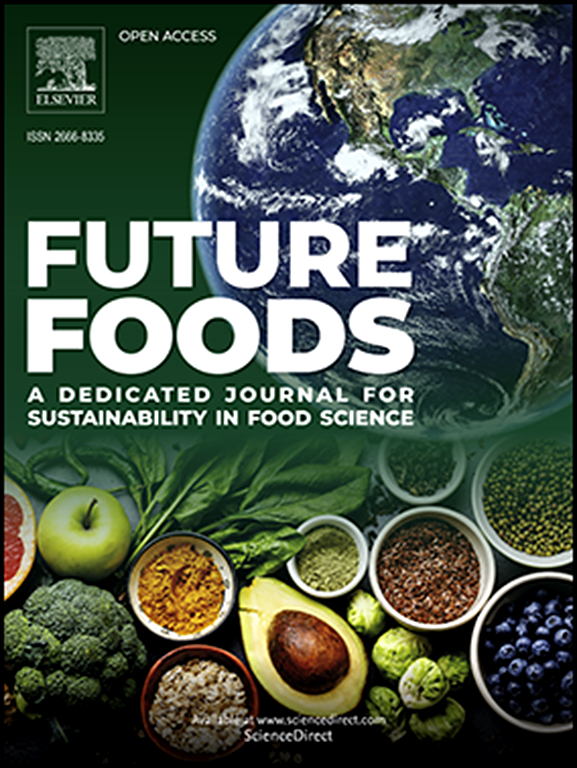Use of a coaxial nozzle-assisted 3D printing and ionic crosslinking to control the texture of a mycoprotein-based food product
IF 7.2
Q1 FOOD SCIENCE & TECHNOLOGY
引用次数: 0
Abstract
This work innovatively merges engineered food structures with additive manufacturing technology to tailor food for different dysphagia levels using filamentous Fungus Aspergillus oryzae biomass through a co-axial 3D food printing process. In order to 3D print samples with different textures, calcium chloride (CaCl2) and calcium gluconolactate (Gluco) were tested at different concentrations alongside three alginate concentrations. The structural and morphological analysis of the printed samples was conducted before cooking, followed by texture analysis and the measurement of cutting strength on cooked samples. Dysphagia food level classification was measured following the International Dysphagia Diet Standardisation Initiative (IDDSI) guidelines. Results revealed that Gluco minimally altered texture but affected appearance, resulting in soft samples (hardness ≈ 1.3 N) with fibrous structures, while CaCl2 increased hardness (from ≈ 1 N to 4.68 N) through alginate-ion Ca2+ interaction. All samples passed the IDDSI test, confirming suitability for dysphagic individuals. This successfully engineered personalised food with tailored texture meeting nutritional requirements.

求助全文
约1分钟内获得全文
求助全文
来源期刊

Future Foods
Agricultural and Biological Sciences-Food Science
CiteScore
8.60
自引率
0.00%
发文量
97
审稿时长
15 weeks
期刊介绍:
Future Foods is a specialized journal that is dedicated to tackling the challenges posed by climate change and the need for sustainability in the realm of food production. The journal recognizes the imperative to transform current food manufacturing and consumption practices to meet the dietary needs of a burgeoning global population while simultaneously curbing environmental degradation.
The mission of Future Foods is to disseminate research that aligns with the goal of fostering the development of innovative technologies and alternative food sources to establish more sustainable food systems. The journal is committed to publishing high-quality, peer-reviewed articles that contribute to the advancement of sustainable food practices.
Abstracting and indexing:
Scopus
Directory of Open Access Journals (DOAJ)
Emerging Sources Citation Index (ESCI)
SCImago Journal Rank (SJR)
SNIP
 求助内容:
求助内容: 应助结果提醒方式:
应助结果提醒方式:


